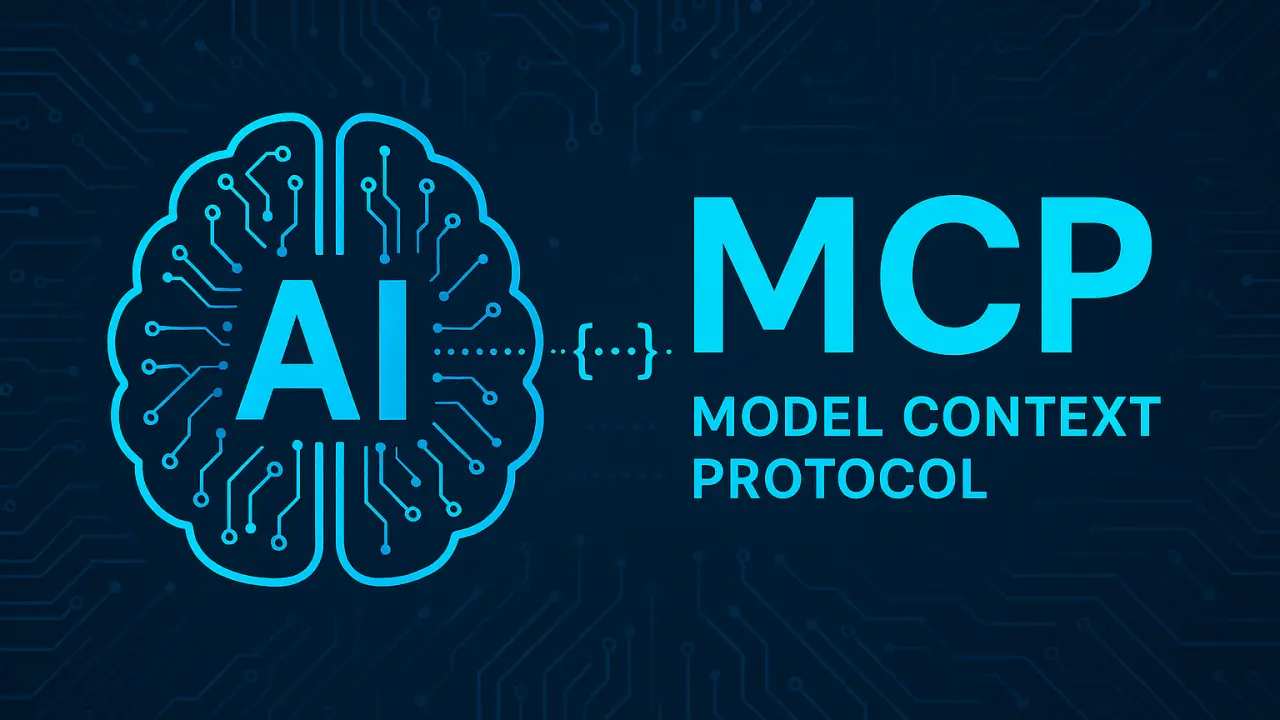

Table of Contents
As businesses move beyond experimental AI applications to full-scale enterprise integration, the limitations of traditional architectures—like dependency on specific LLM ecosystems, static knowledge bases, and rigid workflows—have become glaring. Enter the Model Context Protocol (MCP): an open, secluded, and AI-agnostic system that bridges large language models (LLMs) with real-time venture frameworks, opening adaptable and secure AI capabilities.
In this article, we investigate the execution travel, specialized establishments, and best practices of MCP, utilizing real-world bits of data from NextGenSoft case that exhibits how MCP rethinks AI integration over advanced endeavors.
Understanding MCP: A Strategic Framework for AI Readiness
Model Context Protocol (MCP) isn’t basically another AI middleware—it’s an open standard allowing LLMs to associate with APIs, databases, and endeavor software in a versatile, secure, and vendor-agnostic way.
Core Advantages of MCP
- LLM Agnosticism: Steady integration with OpenAI, Claude, Gemini, and any future LLMs.
- Enterprise-Grade Security: Facilitates organization for compliance with corporate and industry rules.
- Plug-and-Play Integration: Viably planning with 50+ data sources such as Exceed expectations, CSV, and cloud APIs.
- Context Management: Improves real-time responsiveness with energetic streams of setting.
- Workflow Governance: Approves and enhances all streams of information before they are utilized.
These advantages form a solid foundation for organizations that want to standardize, scale, and secure their AI deployments across departments.
Challenges with Legacy AI Architectures
Prior to MCP, organizations would manually create bespoke integrations between AI models and backend infrastructure. This came with the following limitations:
- Vendor Lock-In: Coupled to OpenAI APIs or GPT-based interfaces.
- Integration Complexity: Inability to connect to legacy systems or external APIs.
- Poor Context Handling: Static knowledge bases were unable to handle dynamic contexts.
- High Costs: Usage-based pricing and unused API calls drove costs up.
- Lack of Standardization: Every new use case needed integrations rebuilt from scratch.
This rendered AI solutions brittle, costly, and hard to scale.
The MCP Implementation: Case Study Highlights
NextGenSoft’s selection of MCP illustrates the way the convention disposes of these shortcomings. Their enterprise AI platform, already dependent on RAG pipelines and bespoke GPTs, was integration-difficult, high-latency, and exorbitant. With MCP, they accomplished a secure, versatile, and vigorous engineering with the following components:
MCP Server (Node.js Based)
A specifically built server that orchestrates context, communication, and task execution across various systems via pre-established protocols and APIs.
MCP Client (Java-Based)
Integrated with AWS Bedrock and powered by Claude 3.5, the MCP Client processes request, context data, and response generation.
REST API Layer
Lean and flexible interface that provides third-party applications and services with the simplicity of interfacing into the MCP platform.
Unified Environment
Client and server have a common environment, supporting low-latency, secure, and efficient communication.
Results Achieved:
- Decreased API response time and latency
- Improved AI agent autonomy
- Vendor agility with multi-LLM capability
- Scalable plug-and-play design
- Efficient data ingestion and processing pipelines
Best Practices for Implementing MCP
Begin with Use-Case Clarity
Not all AI integration requires MCP. Start with priority use cases where context-aware automation and real-time system interaction is essential—such as enterprise search, dynamic reporting, or autonomous workflows.
Invest in Modular Design
Create MCP servers and clients using modularity as an approach. Employ RESTful interfaces, microservices, and configurable endpoints to facilitate reuse across teams and applications.
Focus on Security from Day One
Implement enterprise-class authentication (OAuth, token-based auth) on all REST endpoints. Encrypt communication between services and have audit logs for monitoring AI interactions.
Leverage Spring AI for Scalability
Re-implementing the MCP server with Spring AI (as in the case study) increases scalability and modular deployment, particularly for Java/Spring ecosystem familiar enterprises.
Optimize for Latency
MCP implementations may be computationally intensive. Profile your processes and eliminate extraneous steps. Utilize asynchronous messaging and cache recurring requests to avoid bottlenecks.
Embrace LLM Flexibility
Don’t hard-code LLM suppliers. The case illustrates how energetic arrangement makes it simple to switch between Claude, OpenAI, or Gemini depending on errand, cost, or compliance needs.
Build for Agents, Not Just Chatbots
With MCP’s back for agentic design, they plan AI workflows that imitate independent agents—executing errands with small human intercession based on relevant mindfulness.
Monitor and Iterate
Track execution measurements such as throughput, idleness, and utilization patterns. Frequently emphasize to upgrade execution and decrease overhead expenses.
Challenges to Anticipate
Whereas promising, MCP has the challenge of an initial learning twist and setup complexity. Underneath are some of impediments seen when actualizing:
- Steep Setup: Opposite to plug-and-play GPT interface, MCP includes server setup, client integration, and convention mastery.
- Community Maturity: MCP being a more current standard does not appreciate the wide community support experienced with more advanced tools.
- Performance Tuning: Beginning executions might endure from reaction lag, particularly beneath overwhelming load. Optimistic strategies are required.
But with cautious arranging and maintained vision, the challenges are momentary and fixable.
Future Outlook: Toward Autonomous AI Agents
The future is agentic insights for MCP. With more noteworthy emphasis on independent agents, MCP-based systems can make conceivable:
- Real-Time Task Execution: AI operators able to freely recover, handle, and caching venture information.
- Cross-Platform Orchestration: Specialists that cut over CRM, ERP, cloud capacity, and analytics stages.
- Human-in-the-Loop Feedback: More brilliant workflows that incorporate approval, adjustment, and endorsement stages by human directors.
Besides, future convention upgrades will apparently improve execution, make setup easier, and expand LLM compatibility indeed more.
Conclusion
Model Context Protocol is a milestone in enterprise AI architecture. By decoupling vendor reliance and giving a bound together component to coordinated LLMs with frameworks of the world, MCP sets the organisation for undertaking change that’s versatile, secure, and brilliant.
Organizations embracing MCP will not as it were streamline existing AI integrative but will moreover future-proof their frameworks for the another era of agentic, independent insights.
Ready to revolutionize your business with scalable, secure, and smart AI integration? NextGenSoft is the expert in deploying Model Context Protocol (MCP) to unleash the maximum potential of your AI projects. From automating workflows, minimizing vendor lock-in, to enabling autonomous AI agents, our team will assist you through each phase—planning to deployment. Encounter more intelligent, quicker, and more strong AI execution with an engineering that’s future-proofed to meet your commerce prerequisites. Do not be hampered by bequest frameworks.
Connect hands with NextGenSoft today and jump the following step towards enterprise-wide AI fabulousness. Reach out to us presently to set out on your AI travel!
